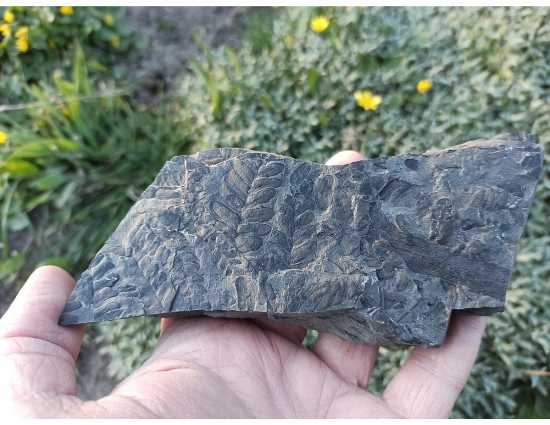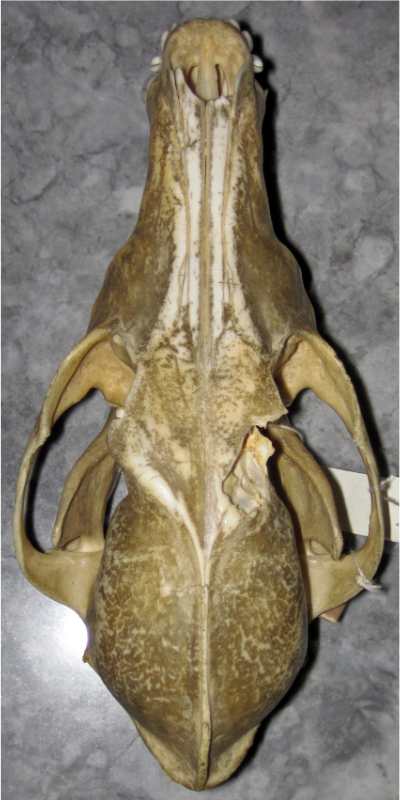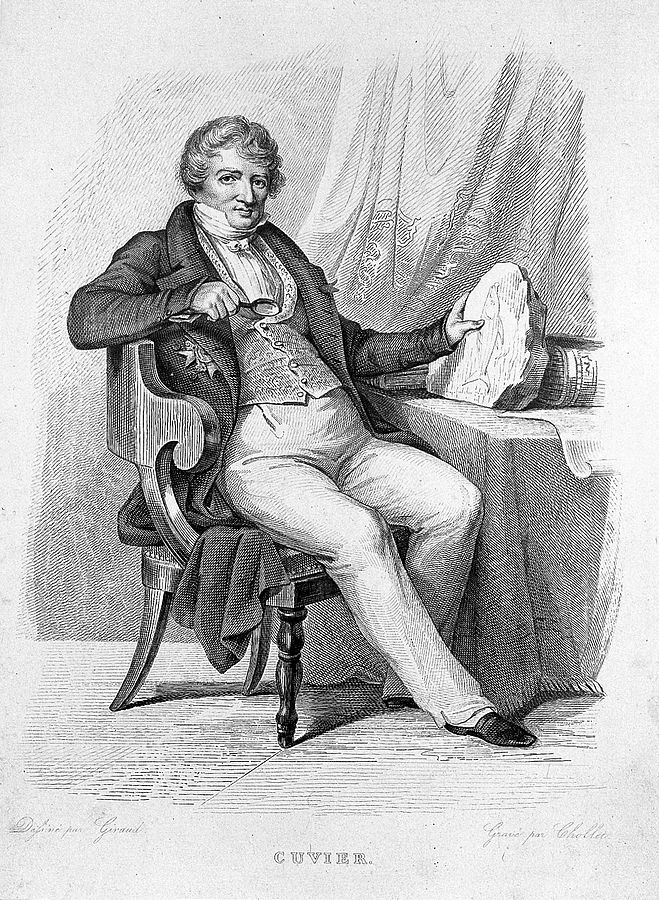Help us improve our
Learn-Along guides!
At The Children’s Hour, we are constantly working to improve our work and tools for educators. It helps us to hear from users to make these guides the best they can be, and to collect your feedback.
Thanks for taking our brief survey after you use our guides.
Katie Stone & Lorraine Archibald
Grade Levels
3-6
Subjects
Science, Social Studies, Art, Information Technology, Media Literacy
Grade Levels
3-6
Subjects
Science, Social Studies, Art, Information Technology, Media Literacy
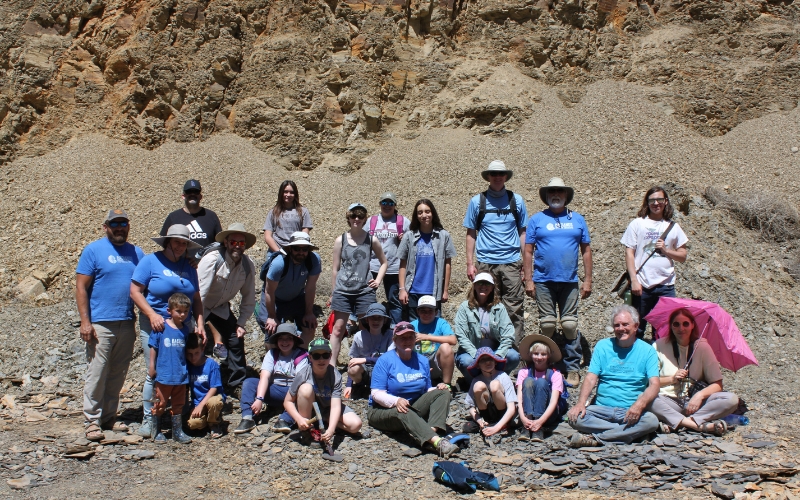
The Childrens Hour Kids Crew and team joined scientists at a secret location to learn more about fossils.
What are fossils and how are they formed?
Fossils are the remains or traces of ancient plants and animals that are preserved through natural processes and are found in the layers of the earth. For a living thing to be fossilized, its remains need to be covered by sediment soon after death. Sediment can include the sandy seafloor, lava, and even sticky tar. Over time, minerals in the sediment seep into the remains. The remains become fossilized. Fossilization usually occurs in organisms with hard, bony body parts, such as skeletons, teeth, or shells. Soft-bodied organisms, such as worms, were rarely fossilized. Sometimes, the sticky sap of a tree can form fossilized resin or amber. Amber has preserved the bodies of delicate, soft-bodied organisms, such as ants, flies, and mosquitoes.
Fossil Facts
-The word fossil comes from a Latin word that means “obtained by digging.”
-Fossils are usually found within sedimentary rock which is made up of sand, mud, and small pieces of rock compressed together.
-The oldest fossil ever found is over three billion years old.
-The fossils of bones, teeth, and shells are called body fossils. Most dinosaur fossils are collections of body fossils.
–Trace fossils are rocks that have preserved evidence of biological activity. For example, a footprint or the imprint of a leaf is a trace fossil. Likewise, coprolite is fossilized poop.
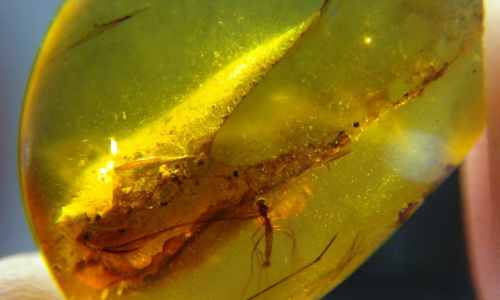
Amber Fossil Image Source
Activity: Pretend that you found one of the following fossils somewhere near where you live. Choose one and imagine a story inspired by one of these fossils that you would like to share with your future generations. Create something to help you tell your story, it can include writing, drawing, coloring, poetry, song, dance, letters, digital presentations, diorama, or any other forms of art to help you tell your story. Then take what you have created and tell your story to someone else.
Plants grow in unique ways depending on the conditions of their environment. Plants have been around for millions of years, and have been used by ancient people just as they are today, for food, shelter, tools, medicine, and more! It is more rare for plants to fossilize than for other hard items such as bones. Image Source
Mammals have been around for millions of years, some even walked with the dinosaurs. Mammal fossils have helped us to learn about enviornments, adaptation, and evolution. Some of the most common mammal fossils found in North America include armadillos, bears, wolves mammoths, beavers and more. Image Source
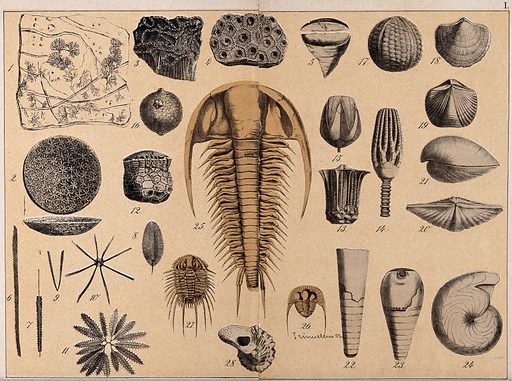
Marine fossils and organisms teach us about the signifant changes that have occured to sea life. Some of the most common fossils include shells, clams, coral, and shark teeth. Marine fossils also teach us about how land has changed creatly over time, just as you heard in the show, marine fossils can even be found in deserts. Image Source
Paleontology
In the show you heard from paleontologists. Paleontology is the branch of science concerned with fossil animals and plants. A paleontologist is someone who studies the history of life on Earth through fossils. This field of science exists to allow people to understand the deep history of a place. The first paleontologists in North America were enslaved and Indigenous people. They discovered and correctly identified fossils that were millions of years old. For example, Indigenous people guided explorers like Lewis and Clark to sites where fossils can be found, and enslaved Africans recognized fossils including mammoth tusks as they looked similar to the animals they had in Africa. Source
Paleontology is an incredibly useful and important field of science, but some concerns are that paleontologists should always consult with the original inhabitants of the land they are extracting fossils from whenever possible, and make sure they are respecting the culture and the ancestors of the people of that land. There are many paths you can take to becoming a paleontologist, a great way to start is to stay curious, learn as much as you can about science and history, and visit natural history museums in your area. You can choose to study paleontology in college where you will get first hand experience to begin your career.
After reading about paleontology, answer the guiding questions, then discuss and share your ideas with others.
- What is Paleontology?
- Why does this field exist?
- Who were the first Paleontologists?
- What did they discover?
- What are some concerns with Paleontology?
- How can I become a Paleontologist?
George Cuvier holds a fossil. Image Source
Fossils and Oral History
George Cuvier also known as the “Father of Paleontology” gathered many stories about fossils from various tribes across North and South America. He learned, as we know today, that indigenous peoples had a pretty accurate understanding of deep history and major events like mass extinctions and environmental upheavals. They knew this because their own fossil findings matched up with the oral histories passed down through generations by their ancestors who once walked alongside megafauna like mammoths, giant sloths, saber-toothed tigers and giant bison. For example, the Zuni harvest dance uses oral history and agriculture to teach their children about how to mature into young adults and to have respect for their parents along with other values. They use the gourd plant, which has been used by their ancestors for thousands of years, to create an instrument and it has symbolic value in the dance. The Zuni teach about the origin story of their people using mural art.
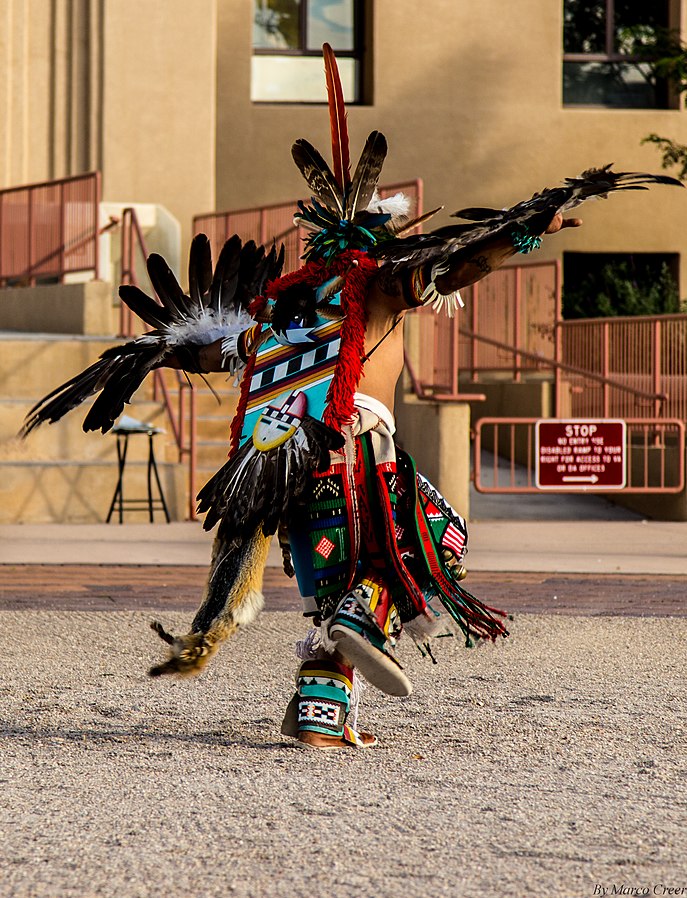
Zuni Eagle Dance. Image Source
Mass Extinctions
Occur when a large number of plant and animal species become extinct within a relatively short period of geologic time. These can be caused by asteriods, volcanoes, climate change, and human activity.
Oral History
Stories passed down from generation to generation that represent important origins, events, and values of a specific group of people. Knowledge is shared through storytelling that uses song, poetry, dance, sculptures, carvings, paintings, and more.
Environmental Upheaval
When there is sudden change of an environment and its ecosystems. An ecosystem is a community of living and non living things, includes soil, atmosphere, heat and light from the sun, water and living organisms.
Past, Present, Future: Fossils and me!
Kids Crew Reporter Amadeas interviews Mike Sanchez who works at the New Mexico Natural History Museum and says that fossils are important because through fossils we can learn alot about the earth, by learning about the past we can learn about ourselves today and the future. We wouldnt know about our ancestry if it wasn’t for fossils.
Dr. Spencer from La Brea Tar Pits helped us to see how the tar pits teach us about how we can protect species and keep ecosystems strong, especially through periods of major environmental upheaval and climate changes to avoid massive extinctions. The small fossils found at the tar pits, like insects and plants, tell us more about the ecosystem of that specific location, since they did not move as much as the larger predators. This information helps us understand the impacts that humans and climate have had on the ecosystem and allows us to see how much the area of Los Angeles has changed. Human communities used the natural resources of the tar pits for thousands of years. We know this because scientific evidence shows that humans used the tar to make objects waterproof such as ceramics, which can be dated back to thousands of years. Human communities still use natural resources today, and because of this, they continue to have a large impact on ecosystems. Complete the following activities to reflect further and to creatively express your ideas.
Reflection Questions
- Why is the ecosystem you live in important to you and your community?
- What were some of the causes for the changes to the ecosystem you imagined? How was it affected?
- What do you think humans can do to reduce the negative impact they have on ecosystems including land, water, air and living things?
- What do you think are some positive impacts that humans have had on the environment?
|
Ancient La Brea-Drawing from Research The La Brea Tar Pits site holds a huge amount of ancient fossil evidence, though it sits in the middle of a modern day major city, Los Angeles. Find out more about what creatures came from the tarpits this resource. Do further research of images of the fossils that have been found at the site. Using what you heard from the show and your imagination, create a drawing of what you think this area could have looked like in the past. |
|
Before and After of an Ecosystem Get a piece of blank white paper and fold it in alf or create a digital document and divide into two halves. Imagine an ecosystem of soil, water, plant and animal life that includes micro organisms, plants, insects, and animals large and small. On the left side of your paper, draw a picture of your ecosystem and what is included in it. Then, imagine that 10,000 years have passed. On the right side, draw or write to explain what changes have occurred. |
Megafauna Media Journal
Fossil Focus: Ground Sloth
During the Ice Age, giant ground sloths roamed the region that is now California. They varied widely in size. Three different types of sloths have been found at the La Brea Tar Pits, one of which is Harlan’s Ground Sloth. Weighing up to 3,000 pounds, it is the largest. These huge mammals lived from nearly 100,000 to 11,000 years ago.
Fossil Focus: Elasmosaurus
Elasmosaurus was a plesiosaur, a type of marine reptile. It was not a dinosaur, though it coexisted with many dinosaurs. The first Elasmosaurus fossil was discovered in 1868. They were carnivores that reproduced by live birth. Elasmosaurus existed from 93.9 million years ago to 70.6 million years ago. Ten different fossil specimens have been found by paleontologists.
Activity
Choose a fossil focus and learn more about ancient megafauna. Then, by writing or through digital format, create a journal entry about what you learned by answering the questions on the right.
What did I already know about this topic?
What did I learn from the video?
What new questions or wonders do I have?
More Resources
- Learn more about fossils and paleontology in the US National Parks: https://www.nps.gov/articles/000/the-second-great-national-park-fossil-quiz.htm
- Prehistoric Life coloring book (line drawings of ancient animals and plants known from fossils discovered in US National Parks): https://www.nps.gov/subjects/fossils/coloring-book.htm
- Fossils Though Geologic Time (articles describing the Periods): https://www.nps.gov/subjects/fossils/fossils-through-geologic-time.htm
- Observe many photos of fossils: https://education.nationalgeographic.org/resource/fossil/
- Learn more about the science of Paleontology: https://education.nationalgeographic.org/resource/paleontology/
- Fossil Identification: https://www.museumoftheearth.org/learn-and-teach/fossil-id
- Visit the website of the La Brea Tar Pits and Musem: https://tarpits.org/
- See examples of fossils between 2 million and 300 million years old at The Children’s Museum of Indianapolis, Indiana. https://nm.pbslearningmedia.org/resource/7613fbd8-73e1-4dda-b846-833b0df52736/indiana-fossils/
- Observe the process of how paleontologists uncover, transport, and study fossils of dinosaur bones in Argentina. https://nm.pbslearningmedia.org/resource/nat16.sci.lisci.dino-fldwrk/paleontologists-at-work/
- Watch how Paleontologist Gary Takeuchi, digs in the fossiliferous area near Los Angeles, California: https://nm.pbslearningmedia.org/resource/3b0257e1-80bf-4eda-a2b3-49fd9560f875/3b0257e1-80bf-4eda-a2b3-49fd9560f875/

